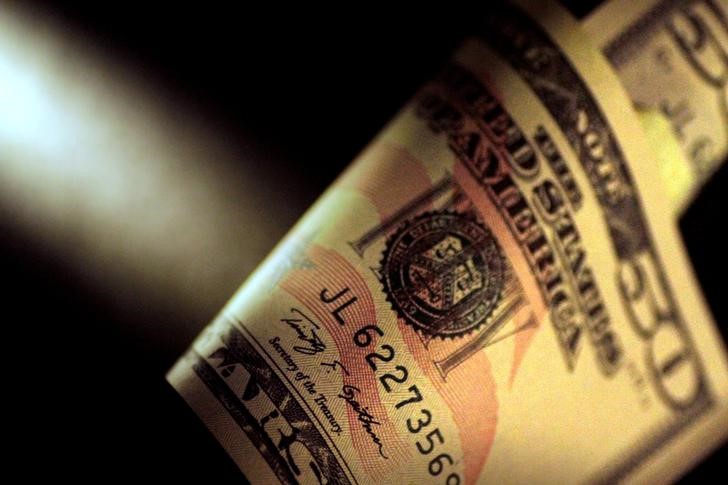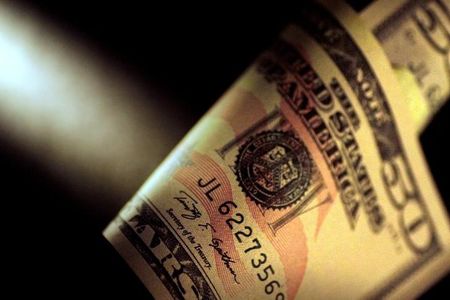 © Reuters.
© Reuters.
By Gina Lee
Investing.com – The dollar was down on Wednesday morning in Asia, with investors taking stock of the risks ahead ranging from Brexit trade talks between the U.K. and the European Union (EU) to the U.S. Congress’ debate over the latest COVID-19 stimulus measures.
The U.S. Dollar Index that tracks the greenback against a basket of other currencies inched down 0.06% to 90.898 by 10:12 PM ET (2:12 AM GMT). The dollar is around half a percent above the two-and-a-half-year low seen on Friday as short sellers jumped in.
The USD/JPY pair inched down 0.01% to 104.14.
The AUD/USD pair inched up 0.07% to 0.7417, with the AUD receiving a boost from December's Westpac Consumer Sentiment (WCS). The WCS’s jump to 4.1%, against November’s 2.5% jump, was the highest in a decade.
Meanwhile, the NZD/USD pair inched down 0.01% to 0.7039.
The USD/CNY pair inched up 0.04% to 6.5333. China's November consumer price index (CPI) came in below expectation, with data showing that CPI contracted 0.6% month-on-month and contracted 0.5% year-on-year, while the producer price index (PPI) contracted 1.5% year-on-year.
The GBP/USD pair inched up 0.10% to 1.3367. The pound whipsawed before steadying above recent lows earlier, with Brexit talks currently deadlocked. It remains to be seen whether a dinner between British Prime Minister Boris Johnson and European Commission President Ursula von der Leyen in Brussels will achieve what negotiators could not. Should the dinner fail, the U.K. faces a chaotic split from the EU should a deal not be reached before the end-of-year deadline.
In anticipation of the wild ride ahead, volatility gauges for the pound have surged. One-week sterling implied volatility saw a fresh eight-month high on Wednesday alongside an elevated premium of puts to calls.
“Put a gun to my head and I’d be a buyer of sterling, as I see the risk skewed that Johnson would come back with some sort of agreement,” Pepperstone’s Chris Weston told Reuters, although he added rewards for such a bet might be limited.
“Broad positioning is short sterling, but not at extremes by any means. This limits the prospect we get an exaggerated short-covering rally to say $1.3800 or $1.4000.”
Across the Atlantic, all eyes are on Treasury Secretary Steven Mnuchin after his statement on Twitter on Tuesday that he had spoken to House of Representatives Speaker Nancy Pelosi about a $916 billion offer for a COVID-19 relief bill. The amount is slightly higher than the $908 billion package proposed by a bipartisan group of lawmakers during the previous week.
The focus is also on the European Central Bank (ECB) and the Fed, both due to hand down their last policy decisions for 2020 on Thursday. For the ECB in particular, investors are looking to see what the central bank will do or say about the euro, which has already gained 8% in 2020.
“It will be a very difficult task for the central bank to weaken the euro,” ING strategists said in a note.
“There is a risk is that the press conference bias pushes the euro higher, particularly if the forward guidance beyond the December easing package is not overly strong,” the note added.
Other investors remained cautious about the dollar’s short-term prospects.
“Things are just stalled at the moment, but they haven’t changed,” Westpac currency analyst Imre Speizer told Reuters.
Uncertainty around Brexit, around the progress of a fiscal spending package through U.S. Congress and around the outcome of Thursday’s ECB meeting have traders temporarily cautious. “We think risk sentiment is going to stay strong … but there’s a few potential spanners in the works, so people are thinking ‘Let’s just hold off pushing the market even higher,’ and that’s why everything’s just stopped where it is,” Speizer added.
Leave a comment
